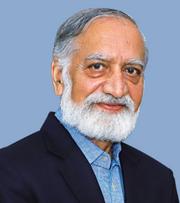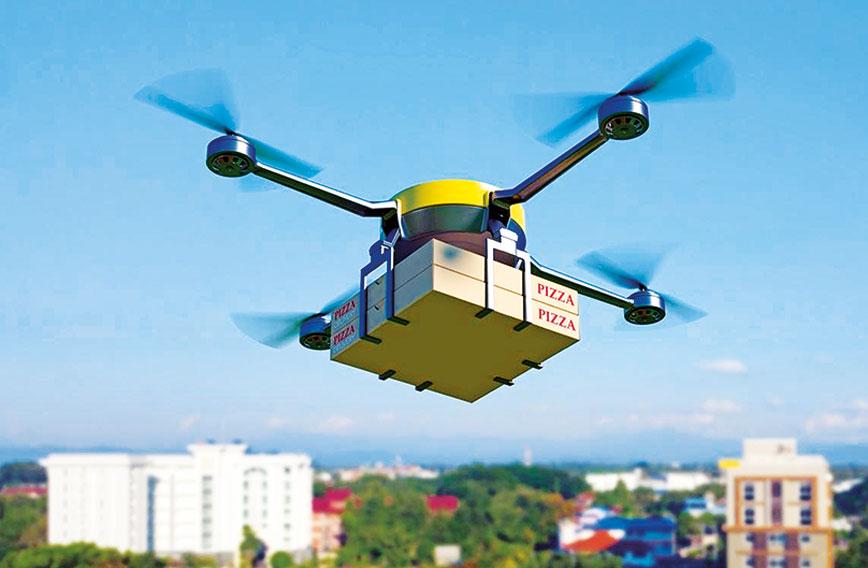
KIRAN KARNIK
IN the years ahead, technology will affect and change our lives even more than it has in the past. Last month, this column briefly covered many aspects. Given its pervasiveness and impact, we continue to look at technology this time as well. In the coming years, technology will be amongst the biggest drivers of the global economy. India is uniquely placed to leverage this in a big way and, while meeting its own special needs, to also claim a far bigger share in the global pie.
Amongst the fastest growing segments will be individualized health devices. While consumer-level blood sugar testing and blood pressure measuring devices have been in the market for a while, millions of oximeters were sold to households during the COVID-19 pandemic. Wearable health devices are already a common consumer item, with the “wrist-watch” of yore now as multi-functional as the mobile phone, and fast becoming as widespread. Amongst its functionalities is the measurement and display of a host of health parameters, which can also be transmitted to a doctor. With increasing sophistication in data analytics and artificial intelligence, a linked service provider can automatically send back personalized health advice based on the individual’s health indicators and history. With advances in technology and in health science, the capability of wearables will increase manifold, further spurring demand and sales. There is an increasing number of other tech-based health devices for individual, household or community use, each having considerable demand (some innovative devices were covered in Dr Raghunath Mashelkar’s article, Civil Society, March 2022). With the vast and fast-expanding domestic market, and the consequent economies of scale, India can easily become the global centre for manufacture of such devices. This could be as big a segment of the global economy as the mobile handsets segment is today. It is an opportunity which India must not miss.
Transportation will witness a sea change. The automobile, one of the mainstays of mobility for over a century, will be transformed with the death of the internal combustion engine. Electric vehicles (EV) will dominate, while newer modes like magnetic levitation and hyperloop will begin to come into play. Drones for short-distance shipping of goods or deliveries will soon be common, though their use for human transportation is probably a decade away. For long-distance travel, planes and trains will still be the primary mode (apart from ships and boats, primarily for goods). In this, while major changes in aircraft technology are likely to be limited to cleaner fuels, high-speed railway ((HSR) will transform travel. India needs to quickly modernize its own now-obsolete network by developing capabilities in HSR, a technology in which it has fallen behind. All these technologies — EVs, hydrogen, drones, HSR and, to a limited extent, mag-lev and hyperloop — will be in use for transportation by the end of this decade. India must accelerate development of technologies in all these fields for both domestic use and as a global player.
A more basic transformation that is already underway is dematerialization: the conversion of atoms to bits. The most visible examples are books and music CDs: both are now available as digital bit-streams, dispensing with the need to transport the physical form. This is a new form of “transportation”. We are, of course, some decades away from the Star Trek stage of “Beam me up, Scotty”!
Apart from healthcare and transportation, another aspect of our daily life that will be transformed is learning. With ever-accelerating change, jobs and roles will be in constant churn. Those who cannot keep up with new knowledge will be in danger of unemployment, making continuous learning, updating, and upgrading of skills absolutely essential. In this, technology is the cause and the solution. Online will play a central role, becoming the primary learning mode, especially for those already working. The already prevalent facility of learning being conveniently available — anytime, anywhere, on any device — will be supplemented by much greater use of AV/VR and AI, enabling quicker learning. With its existing technological base and educational infrastructure, edtech can become a big contributor to talent creation as well as economic growth for the country. Just as it is becoming the pharmacy of the world, India could be the “university of the world”, creating learning content and providing online courses to learners around the world. This is an area in which initiative and innovation are underway; however, much of it is constrained by regulations and rules. Radical reforms in the educational system can accelerate the take-off.
In rural India, tech will spur a new burst of productivity in agriculture. Use of drones for assessing soil moisture and crop health will be accompanied by their use for spraying pesticides and fertilizers where required. Complemented by satellite imagery, weather prediction and on-ground technologies, precision farming will become common in a few years. This will save input costs, increase yields, and thus farm incomes. Other technologies will result in better seeds — increasing output and enriching the produce with vitamins and minerals, catalyzing a new green revolution. Backed by sophisticated analysis of space imagery, tech will also help fisherfolk by suggesting locations for increased catch. Combined with better weather forecasting — enabled by space tech and computer models — and communication, storm and disaster warnings will help to safeguard their lives. At the same time, new communication and production technologies, along with better and cheaper logistics, will facilitate decentralization of manufacturing to rural areas. This will reduce migration to urban areas by providing livelihoods to surplus farm labour.
In the next 10 years, these and other tech-related developments can truly transform India. The right policies, the appropriate ecosystem, and other essentials to realize this were mentioned in this column last month. Yet, there is concern about the negative impact: will the disadvantaged get left behind; will there be a generational digital divide which works against elders; will an overdose of tech make people lose touch with ground reality and live in a fantasy metaverse; will tech dehumanize us? These are issues for which we do need answers and solutions. The starting point must be deliberation and debate.
Kiran Karnik is a public policy analyst and author. His most recent book is ‘Decisive Decade, India 2030: Gazelle or Hippo’
Comments
Currently there are no Comments. Be first to write a comment!




